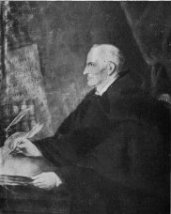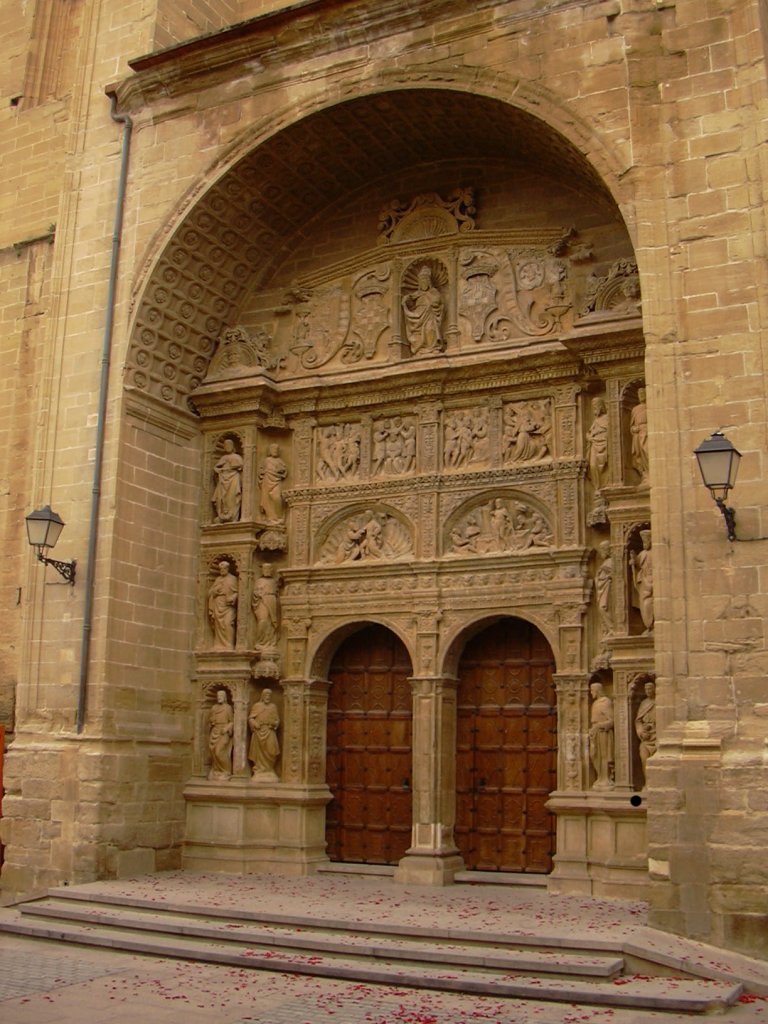|
Manuel Risco
Juan Manuel Martínez Ugarte (1 June 1735 – 30 April 1801), known as Manuel Risco or Padre Risco, was a Spanish historian. Born at Haro, he took the Augustinian habit at the Convento de Nuestra Señora del Risco in the Diocese of Ávila. He studied at the University of Salamanca and was a disciple of Enrique Flórez, who took him along with him on his voyages of historical research. On Flórez's death Risco took over the unfinished Church history of Spain, ''España Sagrada''. By then he was Jefe de Estudios at the Convento de Doña María de Aragón. He published thirteen volumes of the ''España Sagrada'', from thirty to forty-two, inclusive. In 1800 ill health forced him to resign from the project and he ended his days at the Monasterio de San Felipe el Real in Madrid. He was replaced by Juan Fernández de Rojas Juan Fernández de Rojas (1750–1819) was a Spanish historian, writer and humorist of the School of Salamanca. Published works *''"Dolores Sermon of Father J ... [...More Info...] [...Related Items...] OR: [Wikipedia] [Google] [Baidu] |
Haro, La Rioja
Haro () is a town and municipality in the northwest of La Rioja province in northern Spain. It produces red wine, and hosts the annual Haro Wine Festival. Its architectural heritage includes the plateresque main entrance of the Church of Santo Tomás, the work of Felipe Vigarny, numerous palaces, and the old town, which was declared a Historic-Artistic Site in 1975. Haro was the first town in Spain to have electric street lighting. History There are several theories about the founding of Haro, though the most realistic theory is that of Domingo Hergueta, who argued that before the town, there was a lighthouse ( es, faro) near the village of Cerro de la Mota which illuminated the mouth of the Ebro river. The town was named for the lighthouse, and ''Faro'' later evolved into ''Haro''. During the Roman rule of Hispania, a fort called Castrum Bibilium was built in the cliffs of Bibilio. The first mention of Haro dates back to the year 1040, in a document of king García Sánc ... [...More Info...] [...Related Items...] OR: [Wikipedia] [Google] [Baidu] |
Augustinians
Augustinians are members of Christian religious orders that follow the Rule of Saint Augustine, written in about 400 AD by Augustine of Hippo. There are two distinct types of Augustinians in Catholic religious orders dating back to the 12th–13th centuries: * Various congregations of Canons Regular also follow the Rule of Saint Augustine, embrace the evangelical counsels and lead a semi-monastic life, while remaining committed to pastoral care appropriate to their primary vocation as priests. They generally form one large community which might serve parishes in the vicinity, and are organized into autonomous congregations. * Several orders of friars who live a mixed religious life of contemplation and apostolic ministry. The largest and most familiar is the Order of Saint Augustine (OSA), founded in 1244 and originally known as the Hermits of Saint Augustine (OESA). They are commonly known as the Austin Friars in England. Two other orders, the Order of Augustinian Recollec ... [...More Info...] [...Related Items...] OR: [Wikipedia] [Google] [Baidu] |
Monastery Of Our Lady Of The Risco
The Monastery of Our Lady of the Risco is a ruined Augustinian convent located above Amavida in the Sierra de Ávila, Castile and León, Spain. It was founded in 1504 by Francisco de la Parra under the invocation of Our Lady of Sorrows, under the title Our Lady of the Risco. It constituted an important center of evangelization and practically the only cultural center during the Late Middle Ages in the alfoz of what is now the province of Ávila. The monastery had a church, a cloister, a residence for monks, an oriel, terraces for cultivation, a hostel for pilgrims, stables, warehouses and a good water supply network and access roads. Currently only the bell tower remains, along with the entrance arch of the old church, part of the apse (hidden by vegetation) and remains of the walls of different dependencies. Location The monastery is located in the Valley of Amblés, northwest of the town of Amavida, municipality that belongs to the year 2000 and where it is visible. Fr ... [...More Info...] [...Related Items...] OR: [Wikipedia] [Google] [Baidu] |
Diocese Of Ávila
In church governance, a diocese or bishopric is the ecclesiastical district under the jurisdiction of a bishop. History In the later organization of the Roman Empire, the increasingly subdivided provinces were administratively associated in a larger unit, the diocese (Latin ''dioecesis'', from the Greek term διοίκησις, meaning "administration"). Christianity was given legal status in 313 with the Edict of Milan. Churches began to organize themselves into dioceses based on the civil dioceses, not on the larger regional imperial districts. These dioceses were often smaller than the provinces. Christianity was declared the Empire's official religion by Theodosius I in 380. Constantine I in 318 gave litigants the right to have court cases transferred from the civil courts to the bishops. This situation must have hardly survived Julian, 361–363. Episcopal courts are not heard of again in the East until 398 and in the West in 408. The quality of these courts was lo ... [...More Info...] [...Related Items...] OR: [Wikipedia] [Google] [Baidu] |
University Of Salamanca
The University of Salamanca ( es, Universidad de Salamanca) is a Spanish higher education institution, located in the city of Salamanca, in the autonomous community of Castile and León. It was founded in 1218 by King Alfonso IX. It is the oldest university in the Hispanic world and one of the oldest in the world in continuous operation. It has over 30,000 students from 50 different nationalities. History Prior to the foundation of the university, Salamanca was home to a cathedral school, known to have been in existence by 1130. The university was founded as a '' studium generale'' by the Leonese King Alfonso IX in 1218 as the ''scholas Salamanticae'', with the actual creation of the university (or the transformation of the existing school into the university) occurring between August 1218 and the following winter. A further royal charter from King Alfonso X, dated 8 May 1254, established rules for the organisation and financial endowment of the university, and r ... [...More Info...] [...Related Items...] OR: [Wikipedia] [Google] [Baidu] |
Enrique Flórez
Enrique or Henrique Flórez de Setién y Huidobro (July 21, 1702August 20, 1773) was a Spanish historian. Biography Flórez was born in Villadiego Villadiego is a Spanish town and municipality in the comarca of Odra-Pisuerga, in west of the province of Burgos, Castilla y León. It is seat of the comarca of Odra-Pisuerga. It is located 39 kilometres away from Burgos. According to demographi .... At 15 years old, he entered the order of St Augustine. He subsequently became professor of theology at the University of Alcala, where he published a ''Cursus theologiae'' in five volumes (1732–1738). He then devoted himself to historical studies. The first published was his ''Clavis Historiae'', a work similar to the French ''Art de verifier les dates'', and preceding it by several years. It appeared in 1743, and was reprinted many times. The first volume of ''España Sagrada, teatro geografico-historico de La Iglesia de España'' was published in 1747. It consists of a vast comp ... [...More Info...] [...Related Items...] OR: [Wikipedia] [Google] [Baidu] |
Church History
__NOTOC__ Church history or ecclesiastical history as an academic discipline studies the history of Christianity and the way the Christian Church has developed since its inception. Henry Melvill Gwatkin defined church history as "the spiritual side of the history of civilized people ever since our Master's coming". A. M. Renwick, however, defines it as an account of the Church's success and failure in carrying out Christ's Great Commission.A. M. Renwick and A. M. Harman, ''The Story of the Church'' (3rd ed.), p. 8. Renwick suggests a fourfold division of church history into missionary activity, church organization, doctrine and "the effect on human life". Church history is often, but not always, studied from a Christian perspective. Writers from different Christian traditions will often highlight people and events particularly relevant to their own denominational history. Catholic and Orthodox writers often highlight the achievements of the ecumenical councils, while evangeli ... [...More Info...] [...Related Items...] OR: [Wikipedia] [Google] [Baidu] |
España Sagrada
, image_flag = Bandera de España.svg , image_coat = Escudo de España (mazonado).svg , national_motto = ''Plus ultra'' (Latin)(English: "Further Beyond") , national_anthem = (English: "Royal March") , image_map = , map_caption = , image_map2 = , capital = Madrid , coordinates = , largest_city = Madrid , languages_type = Official language , languages = Spanish , ethnic_groups = , ethnic_groups_year = , ethnic_groups_ref = , religion = , religion_ref = , religion_year = 2020 , demonym = , government_type = Unitary parliamentary constitutional monarchy , leader_title1 = Monarch , leader_name1 = Felipe VI , leader_title2 = Prime Minister , leader_name2 = Pedro Sánchez , legislature = Cortes Gene ... [...More Info...] [...Related Items...] OR: [Wikipedia] [Google] [Baidu] |
Convento De Doña María De Aragón ...
A convent is a community of priests, religious brothers, religious sisters or nuns, or the building used by such a community. Convent or convento may also refer to: Places * Convent, Louisiana, U.S. * Convent Gallery, an art museum in Australia * Convento Building (Mission San Fernando), on the U.S. National Register of Historic Places * Hotel El Convento, a hotel in Puerto Rico * Convento, a town in Piedmont, Italy Schools * Dominican Convent High School, Harare, Zimbabwe * Dominican Convent High School, Bulawayo, Zimbabwe * Dominican Convent Primary School, Bulawayo, Zimbabwe * Dominican Convent Primary School, Harare, Zimbabwe Other uses * Convent (band), a project of Emilie Autumn See also * The Convent (other) The Convent may refer to: * The Convent (Gibraltar) The Convent has been the official residence of the governor of Gibraltar since 1728. It was originally a convent of Franciscan friars, hence its name, and was built in 1531, and heavily rebuilt ... [...More Info...] [...Related Items...] OR: [Wikipedia] [Google] [Baidu] |
Monasterio De San Felipe El Real
Monasterio is a municipality located in the province of Guadalajara, Castile-La Mancha, Spain. According to the 2004 census (INE INE, Ine or ine may refer to: Institutions * Institut für Nukleare Entsorgung, a German nuclear research center * Instituto Nacional de Estadística (other) * Instituto Nacional de Estatística (other) * Instituto Nacional Elec ...), the municipality has a population of 24 inhabitants. References Municipalities in the Province of Guadalajara {{CastileLaMancha-geo-stub ... [...More Info...] [...Related Items...] OR: [Wikipedia] [Google] [Baidu] |
Madrid
Madrid ( , ) is the capital and most populous city of Spain. The city has almost 3.4 million inhabitants and a metropolitan area population of approximately 6.7 million. It is the second-largest city in the European Union (EU), and its monocentric metropolitan area is the third-largest in the EU.United Nations Department of Economic and Social AffairWorld Urbanization Prospects (2007 revision), (United Nations, 2008), Table A.12. Data for 2007. The municipality covers geographical area. Madrid lies on the River Manzanares in the central part of the Iberian Peninsula. Capital city of both Spain (almost without interruption since 1561) and the surrounding autonomous community of Madrid (since 1983), it is also the political, economic and cultural centre of the country. The city is situated on an elevated plain about from the closest seaside location. The climate of Madrid features hot summers and cool winters. The Madrid urban agglomeration has the second-la ... [...More Info...] [...Related Items...] OR: [Wikipedia] [Google] [Baidu] |





